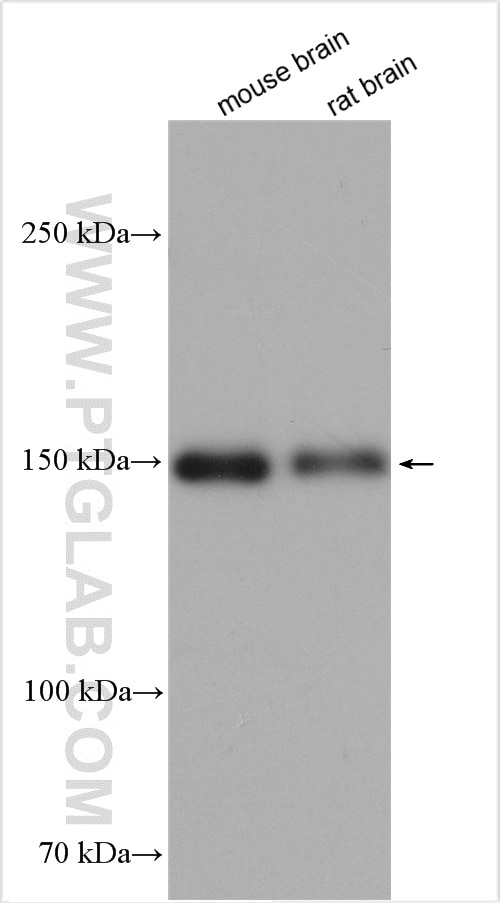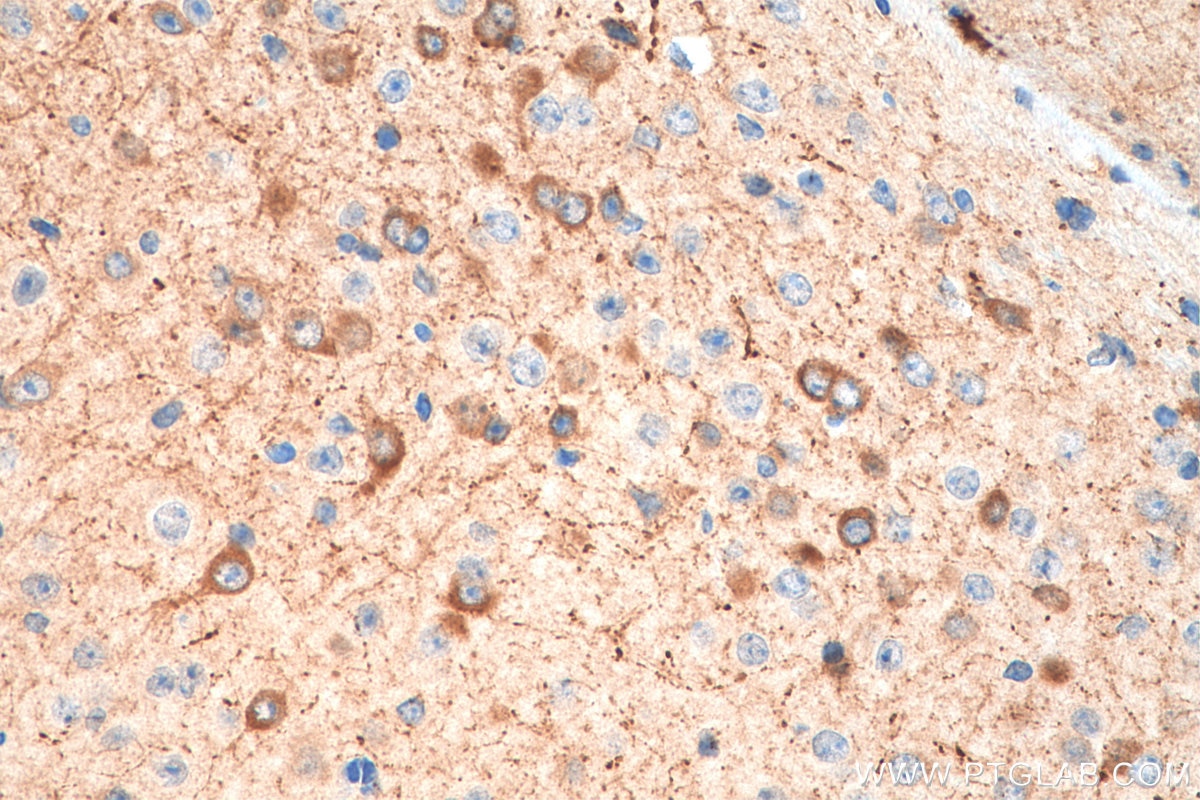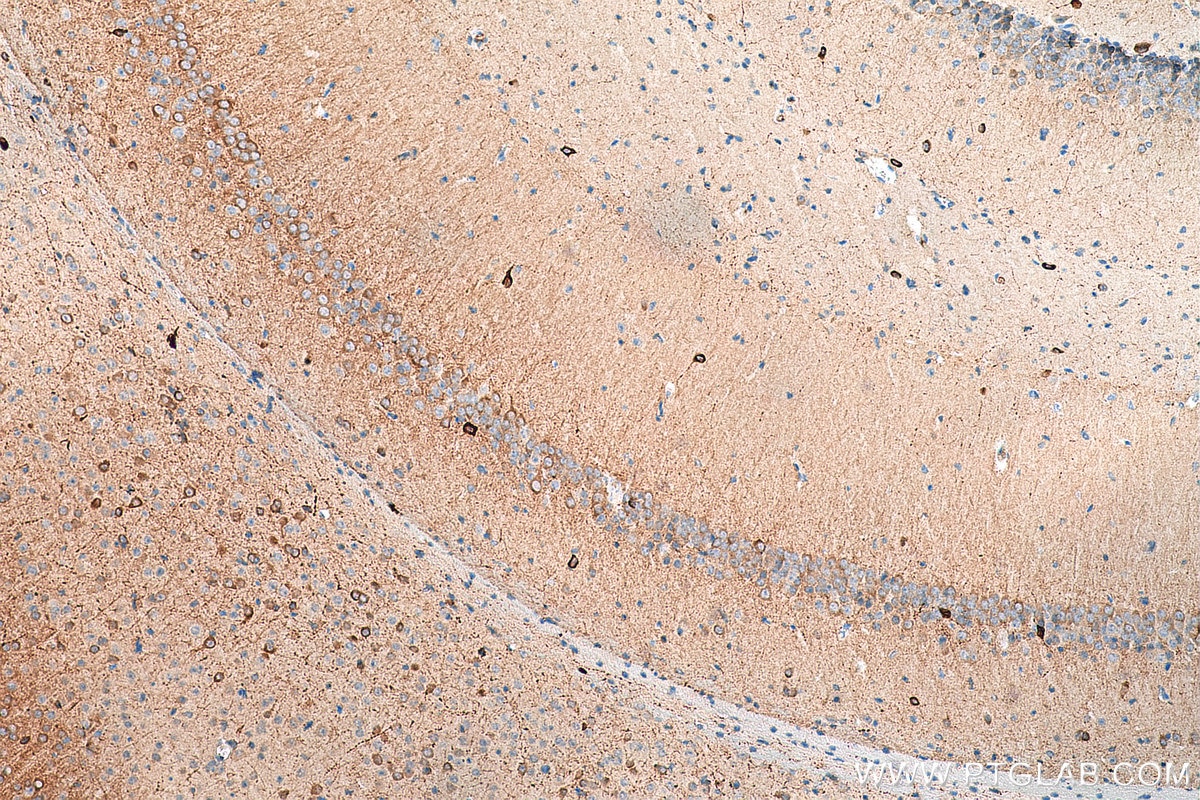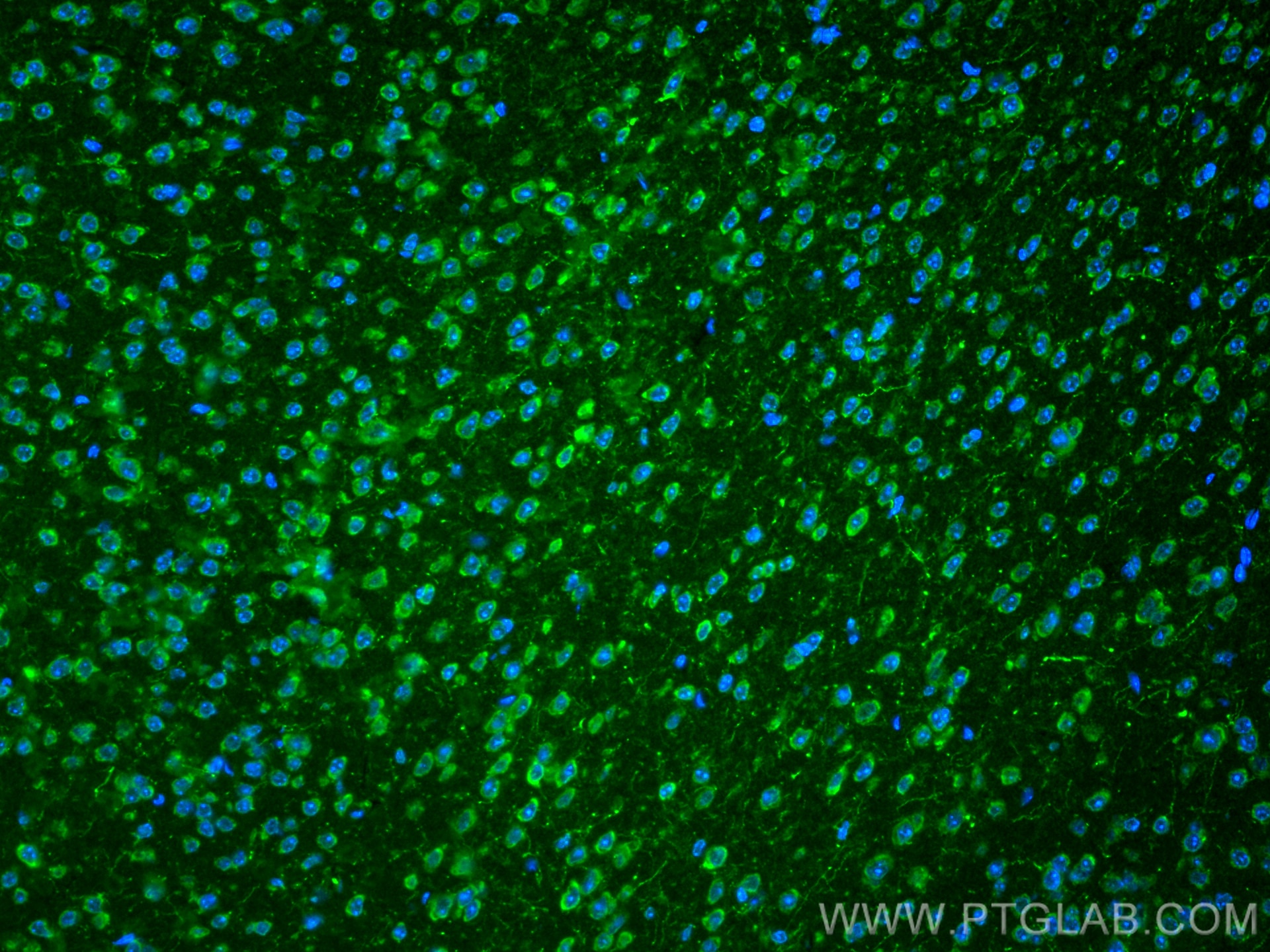Anticorps Polyclonal de lapin anti-nNOS
nNOS Polyclonal Antibody for WB, IHC, IF-P, IF-Fro, FC (Intra), ELISA
Hôte / Isotype
Lapin / IgG
Réactivité testée
Humain, rat, souris
Applications
WB, IHC, IF-P, IF-Fro, FC (Intra), ELISA
Conjugaison
Non conjugué
N° de cat : 29231-1-AP
Synonymes
Galerie de données de validation
Applications testées
| Résultats positifs en WB | tissu cérébral de souris, tissu cérébral de rat |
| Résultats positifs en IHC | tissu cérébral de souris, il est suggéré de démasquer l'antigène avec un tampon de TE buffer pH 9.0; (*) À défaut, 'le démasquage de l'antigène peut être 'effectué avec un tampon citrate pH 6,0. |
| Résultats positifs en IF-P | tissu cérébral de souris, |
| Résultats positifs en IF-Fro | tissu cérébral de rat, |
| Résultats positifs en FC (Intra) | cellules HeLa, |
Dilution recommandée
| Application | Dilution |
|---|---|
| Western Blot (WB) | WB : 1:1000-1:4000 |
| Immunohistochimie (IHC) | IHC : 1:250-1:1000 |
| Immunofluorescence (IF)-P | IF-P : 1:50-1:500 |
| Immunofluorescence (IF)-FRO | IF-FRO : 1:50-1:500 |
| Flow Cytometry (FC) (INTRA) | FC (INTRA) : 0.40 ug per 10^6 cells in a 100 µl suspension |
| It is recommended that this reagent should be titrated in each testing system to obtain optimal results. | |
| Sample-dependent, check data in validation data gallery | |
Applications publiées
| WB | See 4 publications below |
| IF | See 2 publications below |
Informations sur le produit
29231-1-AP cible nNOS dans les applications de WB, IHC, IF-P, IF-Fro, FC (Intra), ELISA et montre une réactivité avec des échantillons Humain, rat, souris
| Réactivité | Humain, rat, souris |
| Réactivité citée | rat, Humain |
| Hôte / Isotype | Lapin / IgG |
| Clonalité | Polyclonal |
| Type | Anticorps |
| Immunogène | nNOS Protéine recombinante Ag28910 |
| Nom complet | nitric oxide synthase 1 (neuronal) |
| Masse moléculaire calculée | 161 kDa |
| Poids moléculaire observé | 160 kDa |
| Numéro d’acquisition GenBank | NM_000620 |
| Symbole du gène | nNOS |
| Identification du gène (NCBI) | 4842 |
| Conjugaison | Non conjugué |
| Forme | Liquide |
| Méthode de purification | Purification par affinité contre l'antigène |
| Tampon de stockage | PBS with 0.02% sodium azide and 50% glycerol |
| Conditions de stockage | Stocker à -20°C. Stable pendant un an après l'expédition. L'aliquotage n'est pas nécessaire pour le stockage à -20oC Les 20ul contiennent 0,1% de BSA. |
Informations générales
nNOS belongs to the NOS family. nNOS produces nitric oxide (NO) which is a messenger molecule with diverse functions throughout the body. In the brain and peripheral nervous system, NO displays many properties of a neurotransmitter. NO is a reactive free radical which acts as a biologic mediator in several processes, including neurotransmission and antimicrobial and antitumoral activities. NO is synthesized from L-arginine by nitric oxide synthases. nNOS is a nitric oxide synthase which is highly expressed in skeletal muscle. Genetic variations in nNOS gene are associated with susceptibility to infantile hypertrophic pyloric stenosis type 1 (IHPS1).The antibody can recognize isoform 1,2,4 of nNOS.
Protocole
| Product Specific Protocols | |
|---|---|
| WB protocol for nNOS antibody 29231-1-AP | Download protocol |
| IHC protocol for nNOS antibody 29231-1-AP | Download protocol |
| IF protocol for nNOS antibody 29231-1-AP | Download protocol |
| FC protocol for nNOS antibody 29231-1-AP | Download protocol |
| Standard Protocols | |
|---|---|
| Click here to view our Standard Protocols |
Publications
| Species | Application | Title |
|---|---|---|
Neurosci Lett Effects of ligustrazine on energy metabolism in migraine rats based on mitochondria-inflammation pathway | ||
J Cell Mol Med S-Nitrosylation of NOTCH1 Regulates Mesenchymal Stem Cells Differentiation Into Hepatocyte-Like Cells by Inhibiting Notch Signalling Pathway | ||
Fluids Barriers CNS Rh-relaxin-2 attenuates oxidative stress and neuronal apoptosis via ERK-nNOS-NO pathway after germinal matrix hemorrhage in rats | ||
Life Sci An animal model induced by bilateral cavernous nerve crushing mimics post-radical prostatectomy erectile dysfunction in old rats | ||
J Nanobiotechnology Biodegradable nano black phosphorus based SDF1-α delivery system ameliorates Erectile Dysfunction in a cavernous nerve injury rat model by recruiting endogenous stem/progenitor cells | ||
Pain Res Manag Exploring the Analgesic Initiation Mechanism of Tuina in the Dorsal Root Ganglion of Minor CCI Rats via the TRPV1/TRPA1-cGMP Pathway |







